We're on the Road to Somewhere: GM Maps its Electric Vehicle Future
The Ultium electric drive system underpins future EVs of various body styles.
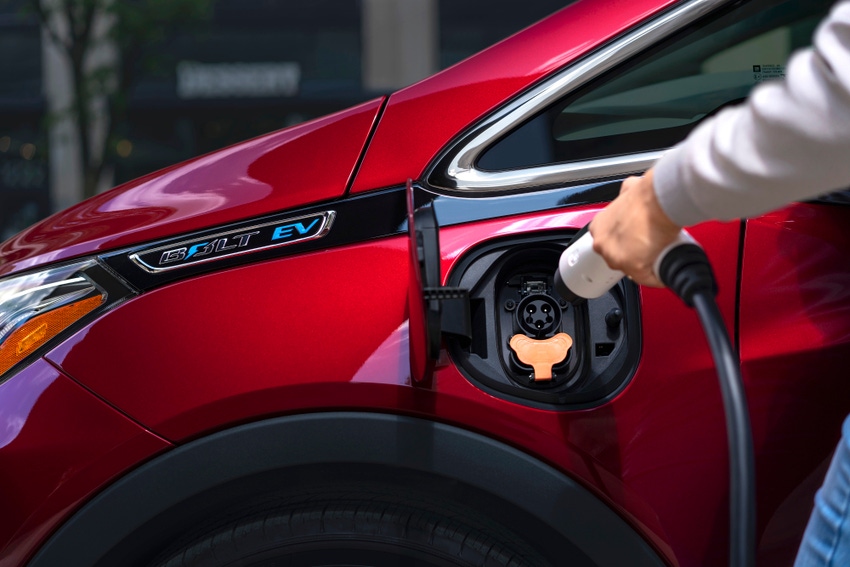
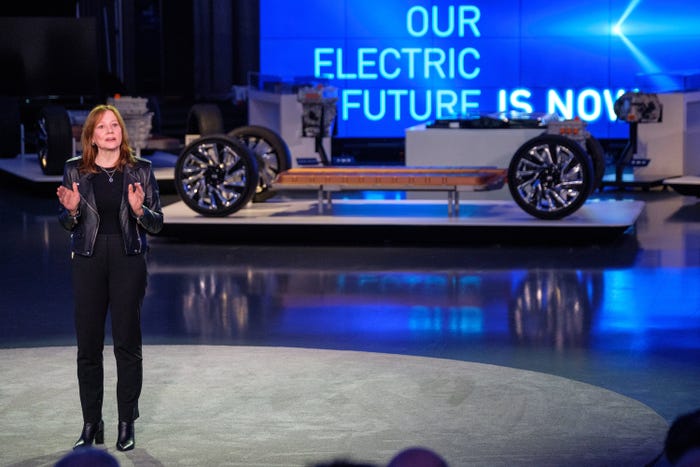
GM CEO Mary Barra presents the Ultium electric drive system. Image source: General Motors Co.
General Motors is pledging to invest $20 billion through 2025 to roll out a raft of new electric models across the company’s range of vehicle segments. “Those are engineering and capital numbers,” emphasized GM CEO Mary Barra. “Those aren’t numbers that have crazy things added to it to make it look big.”
That investment will drive battery cell cost from $145 per kilowatt-hour to less than $100/kWh early in the lifecycle, with a path toward still lower prices. This will fuel sales of a million EVs per year in the combined U.S. and Chinese markets. This progress is based on GM’s new family of pouch-based lithium-ion battery cells it will build through a joint venture with LG Chem. The battery family is dubbed Ultium, and it combines a modular design for battery modules with the flexibility to substitute VHS videotape-sized prismatic battery packs in place of the GM/LG Chem pouches if necessary.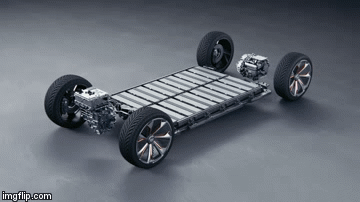 The Ultium battery packs have their battery management system built directly into each pack. This not only eliminates 80 percent of the wiring compared to the separate battery management system used in today’s Chevrolet Bolt, but it also gives each pack its own intelligence.
The Ultium battery packs have their battery management system built directly into each pack. This not only eliminates 80 percent of the wiring compared to the separate battery management system used in today’s Chevrolet Bolt, but it also gives each pack its own intelligence.
This means that packs can be replaced with new packs employing better technology in the future if a car’s pack goes bad and needs service, according to Andy Oury, lead engineer for batteries.
The new cells employ Nickel-Cobalt-Manganese-Aluminum (NCMA) chemistry, which reduces the use of cobalt by 70 percent by adding aluminum to the battery’s cathode. “Working on these cells has been the highlight of my career,” said Oury. While Ultium comprises a whole family of batteries, power electronics and electric motors, “the crown jewel is the battery cell,” he said.
GM’s Ultium motors incorporate the power electronics directly, eliminating 57 percent of the high-voltage wiring. This not only eliminates heavy wires that can introduce a failure point in the future, it also eliminate the hassle of assembling these thick, inflexible cables and their bulky connectors, pointed out GM president Mark Reuss. “Connecting those cables is not fun work,” he noted, explaining that even using tools to assist, snapping the high-voltage connectors together is difficult work.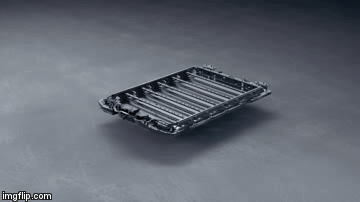
The first vehicle to use the Ultium electric drive system will be the 2022 GMC Hummer SUV and pickup, which is slated to arrive in the fall of 2021. It will employ a 200 kilowatt-hour, 800-volt, double-decker stack of battery packs powering four electric motors to deliver 1,000 horsepower.
The first “normal” single-layer Ultium battery pack will debut in the Cadillac Lyriq, a crossover SUV that will follow the Hummer. That single-layer pack will be a 100 kWh, 400-volt battery system with DC fast-charging at up to 200 kilowatts.
In place of a grille with air openings, the Lyriq has a black crystal layered applique to convey the effect of a grille and that blends into the car’s headlights.
Inside, the Lyriq has a 34-inch wide, curved LED display panel ahead of the driver. Despite the large display, it is not entirely a touch-screen-operated vehicle. “It has a balance of hard controls and soft controls,” explained interior designer Tristan Murphy. “When you lose (physical switches), you lose some of the warmth in the interior,” he said.
 The cabin will be even more futuristic on the Cadillac Celestiq, which is an extremely high-end, hand-built flagship sedan the company plans by 2025. Its arching rear roofline implies a hatch, along the lines of the Audi A7.
The cabin will be even more futuristic on the Cadillac Celestiq, which is an extremely high-end, hand-built flagship sedan the company plans by 2025. Its arching rear roofline implies a hatch, along the lines of the Audi A7.
This car will boast a display panel that stretches the full width of the dashboard, spanning from one windshield pillar to the other. And it is further incorporated into the rest of the car by lighting that extends from each side through the front and rear doors, providing a ring of coordinated light and imagery like that of the animated ribbon scoreboard displays ringing sports stadia on the face of the upper deck of seating.
The Celestiq will be in such a rarefied price and technology strata that it forced the team working on it to raise their games. “It will be something most of us haven’t seen in our careers,” crowed Mike Simcoe, vice president of global design. “We’ve been given free rein to rethink what it means to be Cadillac.”
While the Celestiq is the most distant and advanced of the EV’s GM previewed in the no-photos event, the most imminent is an upgraded Chevrolet Bolt EV. The Bolt continues with its current-generation battery technology, albeit with an upgrade stretching its driving range an extra 21 miles to 259 miles.
Next year, Chevrolet will roll out a Bolt variant with a longer wheelbase and a flatter, less tapered roofline that the company calls the Bolt EUV. The Bolt EUV is more spacious and will be the first vehicle outside the Cadillac brand to offer GM’s SuperCruise driver assistance system. The technology will not be available on the regular Bolt, but it will proliferate to nine other models next year and to 22 vehicles in total by 2023.
“We’ll grow, as existing and new customers embrace no-compromise EVs that are safe, beautiful, attainable and fun to drive,” pledged Barra. “We intend to play a lead role in creating a zero-emissions future.”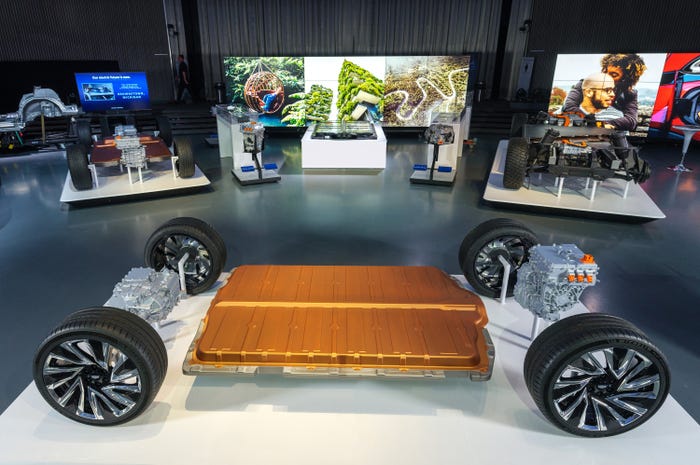
The low-profile Ultium battery pack adds less thickness to the vehicle's floor. Image source: General Motors Co.
RELATED ARTICLES:
Dan Carney is a Design News senior editor, covering automotive technology, engineering and design, especially emerging electric vehicle and autonomous technologies.
About the Author(s)
You May Also Like





